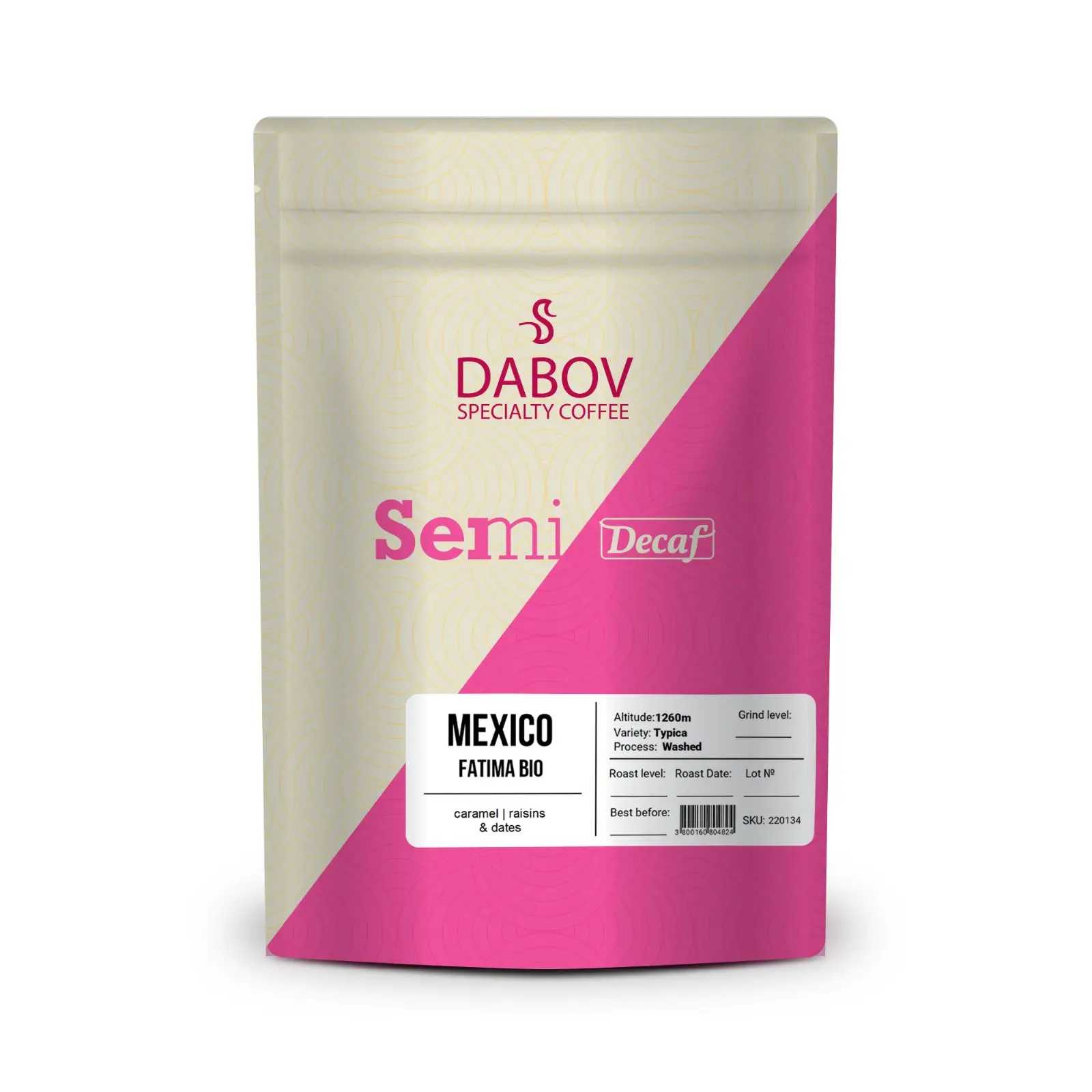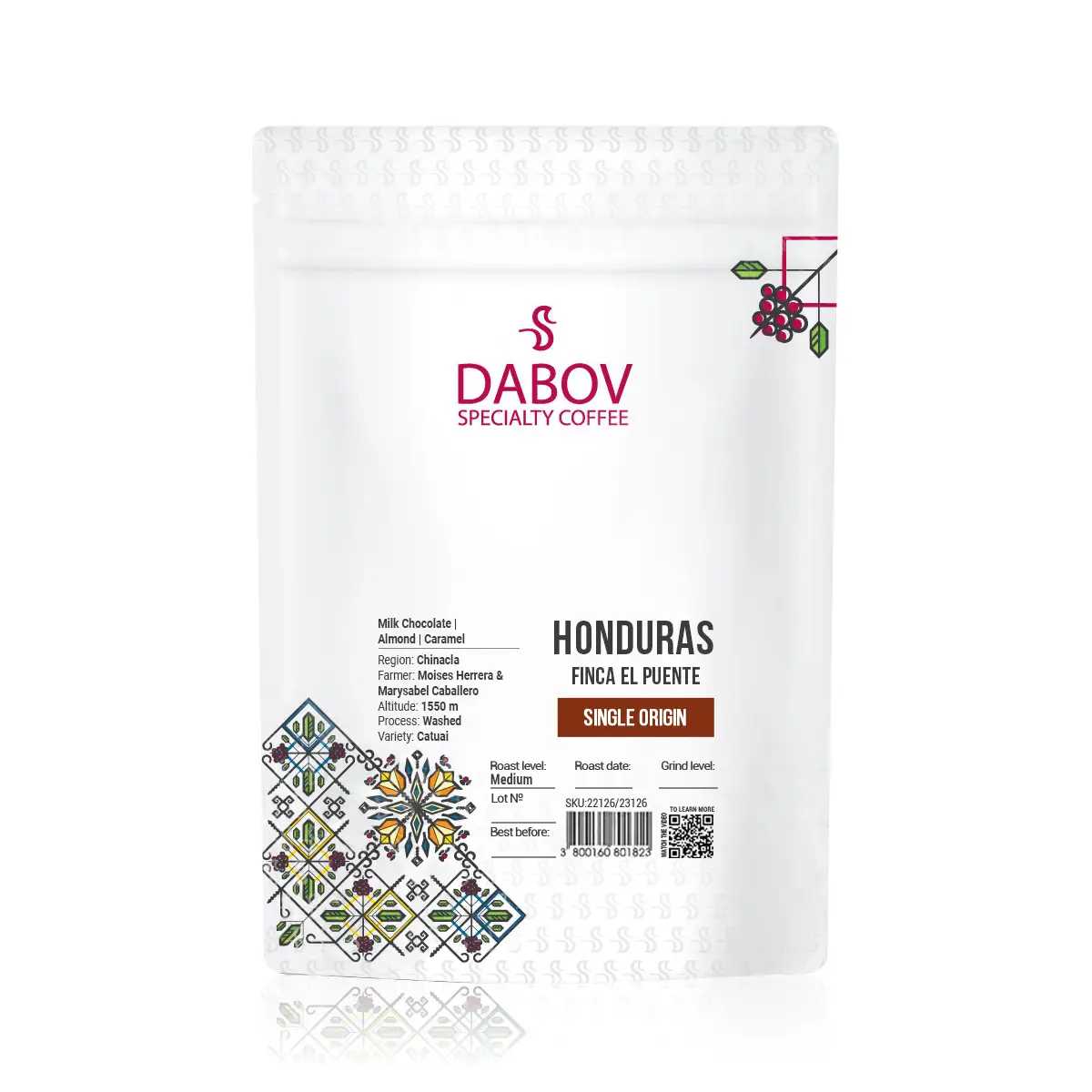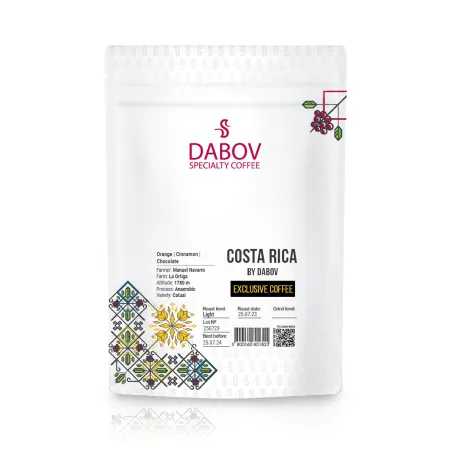Economic Challenges in Coffee Production Solutions and Strategies
The global coffee market is vital, providing income for millions. Yet, it faces tumultuous economic challenges like price volatility, labor shortages, and the impact of climate change. This article delves deep into these issues while proposing innovative solutions such as technology, sustainable farming practices, and financial support. By understanding the full spectrum of coffee production challenges, we can pave the way for a more resilient future for the industry. Join us in exploring strategies that not only improve productivity but also enhance the livelihoods of coffee farmers around the world.
Introduction
Coffee, a beloved beverage consumed by millions worldwide, is not just a morning ritual but a significant economic powerhouse. The global coffee market, valued at over $465 billion in 2020, plays a crucial role in the economies of more than 50 countries, providing livelihoods for an estimated 25 million smallholder farmers. From the lush highlands of Ethiopia to the verdant slopes of Colombia, coffee production is a cornerstone of agricultural economies in many developing nations. However, beneath the aromatic surface of your daily brew lies a complex web of economic challenges that threaten the sustainability of this vital industry.
This article aims to delve deep into the economic challenges faced in coffee production and explore potential solutions and strategies to ensure a sustainable future for coffee farmers and the industry as a whole. By examining the intricate interplay of factors affecting coffee production, from climate change to market volatility, we will uncover the root causes of economic instability in the sector. More importantly, we will investigate innovative approaches, technological advancements, and collaborative efforts that offer hope for a more resilient and equitable coffee economy.
Section 1: Understanding Coffee Production Challenges
1.1 Overview of Coffee Production Challenges
Coffee production is a delicate dance between nature and human intervention, fraught with challenges that span geographical, climatic, and socio-economic dimensions. At its core, coffee cultivation is highly sensitive to environmental conditions, requiring specific altitudes, temperatures, and rainfall patterns to thrive. This environmental dependency makes coffee particularly vulnerable to the impacts of climate change, which we will explore in greater detail later.
Geographically, coffee production is concentrated in the "Bean Belt," a region between the Tropics of Cancer and Capricorn. This concentration in developing countries often means that coffee farmers face infrastructural challenges, including limited access to modern farming technologies, inadequate transportation networks, and insufficient storage facilities. These geographical constraints can significantly impact the efficiency and profitability of coffee production.
Socio-economic factors also play a crucial role in shaping the challenges faced by coffee producers. Many coffee farmers operate on a small scale, with limited access to financial resources, education, and market information. This can lead to a cycle of poverty, where farmers struggle to invest in their farms or adapt to changing market demands. Additionally, the coffee industry's complex supply chain, with multiple intermediaries between farmers and consumers, often results in farmers receiving only a small fraction of the final retail price of coffee.
1.2 Key Economic Issues in the Coffee Industry
1.2.1 Price Volatility
One of the most pressing economic challenges in coffee production is the extreme volatility of coffee prices. The global coffee market is notoriously unstable, with prices subject to rapid and significant fluctuations. These price swings are influenced by a myriad of factors, including weather conditions, currency exchange rates, speculative trading, and changes in supply and demand.
For coffee farmers, price volatility translates into unpredictable income streams, making it difficult to plan for the future or invest in their farms. In years when prices are low, farmers may struggle to cover their production costs, leading to debt accumulation or abandonment of coffee farming altogether. Conversely, when prices spike, it can lead to overproduction, which subsequently drives prices down again, creating a boom-and-bust cycle that destabilizes the entire industry.
The impact of price volatility extends beyond individual farmers to affect entire coffee-producing regions and national economies. Countries heavily dependent on coffee exports can see their economic stability threatened by sudden drops in coffee prices. For instance, the coffee crisis of 2001-2003, when prices fell to their lowest levels in a century, had devastating effects on coffee-producing countries in Central America and Africa, leading to increased poverty, migration, and social unrest.
To illustrate the magnitude of price volatility, consider that in 2011, Arabica coffee prices reached a 34-year high of $3.09 per pound, only to plummet to $1.01 per pound by 2013. Such dramatic swings make it nearly impossible for farmers to predict their income or make long-term investments in their farms, perpetuating a cycle of economic uncertainty.
1.2.2 Supply Chain Disruptions
The coffee supply chain is a complex network involving numerous stakeholders, from farmers and processors to exporters, roasters, and retailers. This intricate system is vulnerable to disruptions at various points, each with the potential to significantly impact the economic outcomes for coffee producers.
One of the primary challenges in the coffee supply chain is the lack of direct market access for smallholder farmers. Many farmers are geographically isolated and lack the resources to transport their coffee to major markets. As a result, they often rely on local intermediaries or "coyotes" who buy their coffee at prices well below market value. This not only reduces farmers' income but also disconnects them from market information and quality feedback that could help improve their production.
Transportation infrastructure poses another significant challenge. In many coffee-producing regions, poor road conditions and inadequate transportation networks can lead to delays in getting coffee from farms to processing facilities or ports. These delays can result in quality degradation, particularly for specialty coffees that require careful handling to preserve their unique characteristics. In extreme cases, entire harvests can be lost due to transportation failures, representing a devastating economic blow to farmers.
Processing and storage facilities are another critical link in the coffee supply chain. Inadequate or outdated processing equipment can lead to quality issues, reducing the value of the coffee. Similarly, improper storage can result in mold or other defects that render the coffee unsaleable. Investments in modern processing and storage facilities are often beyond the means of individual smallholder farmers, creating a barrier to producing higher-quality, more valuable coffee.
The COVID-19 pandemic has further highlighted the vulnerability of the coffee supply chain to global disruptions. Border closures, labor shortages, and shipping delays have created significant challenges for coffee producers and exporters. For instance, in Ethiopia, Africa's largest coffee producer, exports fell by 22% in the early months of the pandemic due to logistical challenges.
1.2.3 Labor Shortages
Labor is a critical component of coffee production, particularly for high-quality, hand-picked coffees. However, the coffee industry is increasingly facing labor shortages that threaten both the quantity and quality of coffee production. These shortages are driven by a complex interplay of demographic, economic, and social factors.
One of the primary drivers of labor shortages in coffee production is rural-to-urban migration. As younger generations seek better economic opportunities and lifestyles in cities, coffee-growing regions are experiencing a brain drain. This trend is particularly pronounced in countries like Colombia, where the average age of coffee farmers has risen to over 55 years. The aging farmer population poses significant challenges for the future of coffee production, as there may not be enough young farmers to take over when the current generation retires.
Economic factors also contribute to labor shortages. When coffee prices are low, farm wages often fail to compete with other employment opportunities, making it difficult to attract and retain workers. This can lead to a vicious cycle where labor shortages result in reduced production or lower quality, which in turn affects farm income and the ability to pay competitive wages.
Climate change is exacerbating the labor shortage problem. As temperatures rise, coffee cultivation is moving to higher altitudes, often in more remote areas. These new growing regions may have smaller local populations to draw from for labor, and their remoteness can make it challenging to attract workers from other areas.
The seasonality of coffee harvesting also contributes to labor challenges. Coffee is typically harvested over a period of several months, requiring a large workforce for a relatively short time. This creates logistical challenges in finding and housing temporary workers, particularly in remote growing regions.
Technological solutions, such as mechanical harvesters, have been proposed to address labor shortages. However, these are often not suitable for high-quality arabica coffees grown on steep terrain, which require selective picking of ripe cherries. Moreover, the high cost of such equipment is often prohibitive for smallholder farmers.
The impact of labor shortages on coffee quality cannot be overstated. Proper harvesting, which involves selectively picking only ripe cherries, is crucial for producing high-quality coffee. When labor is scarce, farmers may be forced to compromise on harvesting practices, leading to a mix of under-ripe and over-ripe cherries that negatively affect cup quality.
Section 2: Analyzing Economic Issues in Coffee Farming
2.1 Cost of Production
The economics of coffee production are complex and often challenging for farmers, particularly smallholders who make up the majority of coffee producers worldwide. Understanding the various components that contribute to the cost of production is crucial for developing strategies to improve the economic sustainability of coffee farming.
Labor costs typically represent the largest single expense in coffee production, accounting for up to 70% of total production costs in some regions. This is particularly true for arabica coffee, which is often grown on steep terrain that requires manual harvesting. The labor-intensive nature of coffee production makes it highly sensitive to wage fluctuations and labor availability.
Input costs, including fertilizers, pesticides, and equipment, are another significant expense for coffee farmers. These costs can vary widely depending on the farming practices employed and local market conditions. For instance, organic farming methods may reduce the need for chemical inputs but often require more labor, creating a trade-off in production costs.
Land costs and access to land are also critical factors in the economics of coffee production. In many coffee-growing regions, land suitable for coffee cultivation is becoming increasingly scarce and expensive. This can make it difficult for new farmers to enter the industry and for existing farmers to expand their operations.
Climate-related damages are becoming an increasingly significant cost factor in coffee production. Extreme weather events, such as droughts, floods, and frost, can cause substantial crop losses. The coffee berry borer, a pest whose range is expanding due to climate change, is estimated to cause over $500 million in damages annually. These climate-related risks not only increase direct production costs but also necessitate investments in adaptation measures, further straining farmers' financial resources.
Transportation and processing costs can also significantly impact the profitability of coffee farming. In remote growing regions, the cost of transporting coffee to processing facilities or export points can be substantial. Similarly, the cost of processing equipment and facilities can be prohibitive for individual smallholder farmers, often necessitating reliance on cooperatives or third-party processors.
Certification costs are an additional expense for farmers seeking to enter specialty or sustainable coffee markets. While certifications like Fair Trade or Organic can potentially lead to higher prices, the initial costs and ongoing compliance requirements can be challenging for smallholder farmers to manage.
The cumulative effect of these various cost factors is that many coffee farmers operate on razor-thin margins. A study by the International Coffee Organization found that in many countries, the cost of production for arabica coffee ranges from $1.20 to $1.50 per pound, while global market prices have often fallen below this range in recent years. This economic squeeze has led to a situation where many farmers struggle to break even, let alone invest in improving their farms or adapting to changing conditions.
2.2 Impact of Climate Change on Economic Sustainability
Climate change poses an existential threat to the coffee industry, with far-reaching implications for the economic sustainability of coffee production. The coffee plant, particularly the high-quality Arabica variety, is notoriously sensitive to temperature changes, requiring specific climatic conditions to thrive. As global temperatures rise, these optimal growing conditions are shifting, creating a cascade of economic challenges for coffee farmers.
One of the most direct impacts of climate change on coffee production is the reduction in suitable growing areas. A study published in the Proceedings of the National Academy of Sciences projected that by 2050, the area suitable for coffee production could decrease by up to 50% under current climate trends. This shrinking of viable coffee lands could lead to increased competition for suitable growing areas, potentially driving up land costs and displacing smallholder farmers.
Rising temperatures also affect coffee yield and quality. Higher temperatures can lead to faster ripening of coffee cherries, which can result in lower quality beans. Additionally, heat stress can cause coffee plants to produce fewer cherries overall, reducing yields. A study in Tanzania found that a temperature increase of just 1°C could lead to a yield decrease of 137 kg/ha. Such yield reductions directly impact farmers' incomes and the overall economic viability of coffee farming.
Climate change is also altering the prevalence and distribution of coffee pests and diseases. The coffee berry borer, for instance, is now able to survive at higher altitudes due to warming temperatures, threatening previously unaffected coffee-growing regions. The economic impact of such pests can be severe, with some estimates suggesting that the coffee berry borer alone causes over $500 million in damages annually.
Extreme weather events, which are becoming more frequent and severe due to climate change, pose another significant economic risk to coffee farmers. Droughts can lead to crop failures, while excessive rainfall can cause landslides and soil erosion, damaging coffee plants and infrastructure. These events can wipe out an entire year's income for farmers and require significant investments to recover.
The need for adaptation to changing climatic conditions presents an additional economic burden for coffee farmers. Strategies such as shifting to higher altitudes, implementing shade-growing techniques, or adopting new, more resilient coffee varieties all require significant investments. For many smallholder farmers operating on tight margins, these adaptation costs can be prohibitive without external support.
The economic impacts of climate change on coffee production extend beyond individual farmers to affect entire communities and national economies. In countries where coffee is a major export, climate-induced reductions in coffee production can have ripple effects throughout the economy, affecting employment, foreign exchange earnings, and overall economic stability.
2.3 Market Access and Fair Trade Concerns
Access to markets and fair trade practices are critical factors in determining the economic outcomes for coffee farmers, particularly smallholders who make up the majority of coffee producers worldwide. The complex and often opaque nature of the global coffee supply chain can create significant barriers for farmers seeking to maximize the value of their crop.
One of the primary challenges in market access is the physical distance between coffee producers and end markets. Many smallholder farmers are located in remote, rural areas with limited transportation infrastructure. This geographical isolation can make it difficult and expensive to transport coffee to processing facilities or export points, reducing farmers' ability to access higher-value markets directly.
The lack of market information is another significant barrier for many coffee farmers. Without access to current price data, quality standards, and market trends, farmers are at a disadvantage when negotiating with buyers. This information asymmetry often results in farmers receiving prices well below the true market value of their coffee.
The structure of the coffee supply chain itself can also pose challenges for farmers. The chain typically involves multiple intermediaries between farmers and end consumers, including local buyers, exporters, importers, roasters, and retailers. Each intermediary takes a cut of the final retail price, often leaving farmers with only a small fraction of the value. A study by Fairtrade International found that coffee farmers typically receive only 7-10% of the retail price of coffee in supermarkets.
Fair trade initiatives have emerged as a response to these market access and equity issues. Fair trade certification aims to ensure that farmers receive a minimum price for their coffee, providing a safety net against market volatility. Additionally, fair trade often includes a premium that can be invested in community development projects or farm improvements.
However, fair trade is not without its challenges and criticisms. The costs of certification can be prohibitive for some smallholder farmers, potentially excluding those who could benefit most from fair trade practices. There are also concerns about whether the minimum prices set by fair trade organizations truly reflect the cost of sustainable production in all contexts.
Beyond fair trade, there's a growing movement towards direct trade relationships between roasters and farmers. This model aims to cut out intermediaries, allowing for higher prices to be paid to farmers and fostering long-term relationships that can lead to quality improvements and greater economic stability for producers.
Market access is also increasingly influenced by consumer preferences for specialty and sustainably produced coffees. While these high-value markets can offer better prices for farmers, they also come with higher quality requirements and often necessitate investments in improved production and processing methods.
The rise of e-commerce and digital platforms presents both opportunities and challenges for coffee farmers' market access. On one hand, these technologies can potentially connect farmers more directly with buyers and provide access to market information. On the other hand, the digital divide in many coffee-producing regions means that not all farmers can benefit equally from these technological advancements.
Section 3: Coffee Production Solutions
3.1 Technology and Innovation in Coffee Farming
3.1.1 Precision Agriculture
Precision agriculture represents a paradigm shift in coffee farming, leveraging technology to optimize resource use, increase yields, and improve coffee quality. This approach uses data-driven insights to make informed decisions about every aspect of coffee cultivation, from planting to harvesting.
One of the key technologies driving precision agriculture in coffee farming is remote sensing. Satellite imagery and drone-based sensors can provide detailed information about crop health, soil moisture levels, and pest infestations. This data allows farmers to identify and address issues quickly, potentially preventing crop losses and reducing the need for broad-spectrum pesticide applications.
For instance, a study in Brazil demonstrated that using remote sensing technology to guide fertilizer application resulted in a 20% increase in coffee yields while reducing fertilizer use by 15%. This not only improved profitability but also reduced the environmental impact of coffee production.
Soil sensors are another crucial component of precision agriculture in coffee farming. These devices can provide real-time data on soil moisture, temperature, and nutrient levels. By precisely monitoring these factors, farmers can optimize irrigation and fertilization practices, reducing water and input waste while promoting optimal plant growth.
Weather stations equipped with IoT (Internet of Things) technology are becoming increasingly common in coffee-growing regions. These stations provide localized weather data that can help farmers make informed decisions about pest control, irrigation, and harvesting. For example, knowing the exact timing of rainfall can help farmers schedule fertilizer applications for maximum effectiveness and minimal runoff.
GPS-guided machinery, while less common in smallholder coffee farming due to the often steep and irregular terrain, is being adopted in some larger coffee plantations. This technology can ensure precise planting patterns, optimized use of inputs, and even assist in selective harvesting of ripe cherries.
Mobile applications are playing a crucial role in making precision agriculture accessible to smallholder farmers. Apps can provide farmers with actionable insights based on data collected from various sources, including weather stations, soil sensors, and satellite imagery. Some apps even use artificial intelligence to diagnose plant diseases from smartphone photos, providing early warning of potential issues.
The economic benefits of precision agriculture in coffee farming can be substantial. By optimizing resource use, farmers can significantly reduce their input costs. Improved crop management leads to higher yields and better quality coffee, potentially commanding premium prices. Additionally, the data collected through precision agriculture practices can help farmers demonstrate their sustainability credentials, potentially opening up access to high-value specialty coffee markets.
However, it's important to note that the adoption of precision agriculture technologies in coffee farming faces several challenges. The initial cost of equipment and sensors can be prohibitive for many smallholder farmers. There's also a need for training and technical support to help farmers effectively use these technologies. Despite these challenges, the potential of precision agriculture to transform coffee farming economics makes it a crucial area for investment and development.
3.1.2 Sustainable Farming Techniques
Sustainable farming techniques are becoming increasingly crucial in the coffee industry, not only for environmental reasons but also for long-term economic viability. These methods aim to maintain or enhance soil fertility, conserve water, promote biodiversity, and reduce reliance on chemical inputs, all while ensuring profitable coffee production.
Agroforestry is one of the most promising sustainable techniques for coffee cultivation. This approach involves integrating trees and shrubs into coffee plantations, creating a multi-layered canopy that mimics natural forest ecosystems. The benefits of agroforestry in coffee production are multifaceted:
- Climate resilience: The shade provided by trees helps regulate temperature and humidity, protecting coffee plants from extreme weather events and reducing the impact of climate change.
- Soil health: Leaf litter from shade trees enriches the soil, improving its structure and fertility. This can reduce the need for chemical fertilizers and enhance the coffee's flavor profile.
- Biodiversity: Agroforestry systems support a wide range of plant and animal species, creating habitats for beneficial insects and birds that can help control pests naturally.
- Income diversification: Farmers can generate additional income from the shade trees, such as fruit or timber, providing economic stability during coffee price fluctuations.
A study in Costa Rica found that coffee farms using agroforestry techniques had 31% higher net income compared to conventional sun-grown coffee farms, demonstrating the economic potential of this approach.
Organic farming is another sustainable technique gaining traction in the coffee industry. Organic coffee production eliminates the use of synthetic pesticides and fertilizers, relying instead on natural pest control methods and organic fertilizers. While the transition to organic farming can be challenging and may initially result in lower yields, the long-term benefits can be significant:
- Premium prices: Organic certified coffee often commands higher prices in the market, potentially offsetting any yield reductions.
- Reduced input costs: By eliminating expensive chemical inputs, farmers can lower their production costs over time.
- Soil health: Organic practices promote long-term soil fertility, which can lead to more resilient and productive coffee plants.
- Health benefits: Organic farming reduces farmers' exposure to harmful chemicals, potentially leading to better health outcomes for farming communities.
Water conservation techniques are becoming increasingly important in coffee farming, particularly in regions facing water scarcity. Methods such as drip irrigation, rainwater harvesting, and water recycling can significantly reduce water use while maintaining or even improving coffee yields. For example, a study in Vietnam found that implementing water-saving irrigation techniques reduced water use by 30% without affecting coffee yields.
Integrated Pest Management (IPM) is a sustainable approach to pest control that combines biological, cultural, physical, and chemical tools in a way that minimizes economic, health, and environmental risks. In coffee farming, IPM strategies might include:
- Using pheromone traps to monitor and control the coffee berry borer
- Planting trap crops to divert pests away from coffee plants
- Encouraging natural predators of coffee pests
- Using resistant coffee varieties
IPM can significantly reduce pesticide use, lowering input costs and potentially allowing access to premium markets for low-chemical coffee.
Soil conservation practices, such as contour planting, terracing, and cover cropping, are crucial for sustainable coffee production, particularly on sloped terrain. These techniques help prevent soil erosion, maintain soil fertility, and improve water retention. Over time, this can lead to more stable yields and reduced need for fertilizer inputs.
While the adoption of sustainable farming techniques can require initial investments and a period of transition, the long-term economic benefits can be substantial. These methods not only reduce input costs and improve resilience to climate change but also open up opportunities for premium pricing in specialty and sustainable coffee markets. As consumers become increasingly conscious of the environmental impact of their coffee consumption, sustainable farming practices are likely to become a key differentiator in the global coffee market.
3.2 Financial Support and Microfinancing
Access to financial resources is a critical factor in enabling coffee farmers to invest in their farms, adopt new technologies, and weather market fluctuations. However, traditional banking systems often fail to meet the needs of smallholder coffee farmers due to their remote locations, lack of collateral, and the seasonal nature of coffee income. Microfinancing and innovative financial support mechanisms have emerged as crucial solutions to bridge this gap.
Microfinance institutions (MFIs) play a vital role in providing small loans to coffee farmers who would otherwise be unable to access credit. These loans can be used for various purposes, including:
- Purchasing inputs such as fertilizers and pest control products
- Investing in processing equipment to improve coffee quality
- Implementing sustainable farming practices or obtaining certifications
- Bridging income gaps between harvests
The impact of microfinance on coffee farming can be significant. A study in Nicaragua found that coffee farmers with access to microloans were able to increase their productivity by 25% and their income by 30% over three years.
Savings and Credit Cooperatives (SACCOs) are another important financial mechanism for coffee farmers. These member-owned financial cooperatives pool savings from members and provide loans at reasonable interest rates. SACCOs often have a deep understanding of local coffee farming practices and can tailor their financial products to meet the specific needs of coffee farmers.
Value chain financing is an innovative approach that leverages relationships within the coffee supply chain to provide financial services to farmers. For example, coffee exporters or roasters may provide pre-harvest financing to farmers based on future coffee deliveries. This type of financing can help farmers access funds when they need them most, such as during the growing season when expenses are high but income is low.
Mobile banking and digital financial services are revolutionizing access to financial services for coffee farmers in remote areas. These technologies allow farmers to receive payments, save money, and access loans through their mobile phones, reducing transaction costs and increasing financial inclusion. For instance, in Kenya, the M-PESA mobile money system has been widely adopted by coffee farmers, enabling them to receive payments quickly and securely.
Crop insurance is another crucial financial tool for coffee farmers, helping to mitigate the risks associated with crop failures due to weather events or pest infestations. While traditional insurance products have been challenging to implement in smallholder farming contexts, innovative index-based insurance schemes are showing promise. These products pay out based on predetermined weather indices, reducing the cost and complexity of assessing individual farm losses.
Impact investing and blended finance models are emerging as important sources of capital for the coffee sector. These approaches combine public, private, and philanthropic capital to invest in coffee farms and cooperatives, often with a focus on improving sustainability and resilience. For example, the Fairtrade Access Fund provides long-term loans to coffee cooperatives to invest in quality improvement and climate adaptation.
Government-backed loan guarantee programs can also play a crucial role in improving coffee farmers' access to finance. By providing guarantees to banks and MFIs, these programs can encourage lending to smallholder farmers who might otherwise be considered too risky.
Financial literacy training is an essential complement to these financial support mechanisms. Many coffee farmers lack the financial management skills needed to effectively use credit and manage their farm finances. Programs that combine financial services with education on budgeting, savings, and investment can significantly enhance the impact of financial support.
While these financial support mechanisms offer significant potential to improve the economic situation of coffee farmers, it's important to note that they are not without challenges. High interest rates, over-indebtedness, and dependency on credit are potential risks that need to be carefully managed. Additionally, financial services need to be tailored to the specific needs and cash flow patterns of coffee farming to be truly effective.
3.3 Research and Development
Research and Development (R\&D) plays a crucial role in addressing the economic challenges faced by the coffee industry. By focusing on developing new coffee varieties, improving farming techniques, and enhancing processing methods, R\&D efforts can significantly contribute to the sustainability and profitability of coffee production.
One of the primary areas of focus in coffee R\&D is the development of new coffee varieties that are more resilient to pests, diseases, and climate variations. This work is critical given the increasing threats posed by climate change and the spread of coffee diseases like coffee leaf rust (CLR). For example, the World Coffee Research organization has been working on developing F1 hybrid coffee plants that combine high yield potential with disease resistance and climate resilience.
These new varieties can have a significant economic impact. A study in Central America found that farms planted with CLR-resistant varieties maintained their productivity during a severe outbreak, while neighboring farms with traditional varieties saw yields drop by up to 50%. The economic implications of such resilience are profound, potentially saving farmers from catastrophic losses and stabilizing coffee supply.
Genetic research is also being conducted to improve coffee quality characteristics. By identifying and manipulating genes responsible for flavor compounds, researchers aim to develop varieties that produce exceptional cup quality even under challenging growing conditions. This could allow farmers to access premium markets and command higher prices for their coffee.
Climate change adaptation is another crucial area of R\&D in coffee production. Researchers are working on developing farming techniques that can help coffee plants withstand higher temperatures and irregular rainfall patterns. This includes studying the effectiveness of shade-grown coffee systems, drought-resistant farming practices, and precision irrigation techniques.
For instance, a research project in Vietnam demonstrated that implementing water-saving irrigation techniques could reduce water use by 30% without affecting coffee yields. Given that water scarcity is becoming an increasing concern in many coffee-growing regions, such innovations could be crucial for the long-term economic viability of coffee farming.
Pest and disease management is an ongoing focus of coffee R\&D. Researchers are exploring both chemical and biological control methods to combat major coffee pests like the coffee berry borer and diseases like coffee leaf rust. The development of integrated pest management (IPM) strategies tailored to different coffee-growing regions can help farmers reduce crop losses and minimize pesticide use, leading to both economic and environmental benefits.
Post-harvest processing is another area where R\&D is driving significant improvements. Innovations in fermentation techniques, drying methods, and storage solutions are helping to enhance coffee quality and reduce post-harvest losses. For example, research into controlled fermentation processes has led to the development of new flavor profiles in coffee, allowing producers to differentiate their products in the specialty coffee market.
Soil health and nutrition management are also key areas of research. Studies are being conducted on optimal fertilization practices, the use of cover crops, and the integration of agroforestry systems in coffee production. These efforts aim to improve soil fertility and structure, which can lead to better yields and reduced input costs for farmers.
Technology integration in coffee farming is an emerging field of R\&D. This includes the development of smartphone apps for pest identification and management, the use of remote sensing for crop monitoring, and the application of blockchain technology for supply chain transparency. These technological innovations have the potential to improve farm management, increase efficiency, and provide better market access for farmers.
Economic and market research is also crucial for addressing the challenges in coffee production. Studies on price volatility, market access, and value chain dynamics can inform policy decisions and help develop more equitable trading practices. For instance, research into alternative pricing models, such as the living income reference price, aims to ensure that coffee prices reflect the true cost of sustainable production.
While R\&D offers tremendous potential for improving the economics of coffee production, it's important to note that the benefits of research are not always equally accessible to all farmers. Smallholder farmers, in particular, may face barriers in adopting new varieties or technologies due to lack of resources or information. Therefore, it's crucial that R\&D efforts are complemented by effective extension services and support mechanisms to ensure that innovations reach those who need them most.
Moreover, there's a growing recognition of the importance of participatory research approaches that involve farmers in the R\&D process. By incorporating farmers' traditional knowledge and practical experience, these approaches can lead to more relevant and adoptable innovations.
Section 4: Strategic Approaches in the Coffee Industry
4.1 Collaboration and Partnerships
Collaboration and partnerships have emerged as powerful strategies for addressing the economic challenges in coffee production. By joining forces, various stakeholders in the coffee value chain can leverage their collective strengths to create more sustainable and equitable outcomes for coffee farmers.
Cooperatives are one of the most important forms of collaboration in the coffee industry. These farmer-owned organizations allow smallholders to pool their resources, achieve economies of scale, and increase their bargaining power in the market. Cooperatives can provide numerous benefits to their members:
- Collective marketing: By aggregating their coffee, cooperatives can negotiate better prices with buyers and access larger markets.
- Shared infrastructure: Cooperatives can invest in processing facilities, storage units, and transportation, which would be too costly for individual farmers.
- Access to inputs: Bulk purchasing of inputs like fertilizers and pesticides can reduce costs for farmers.
- Technical assistance: Many cooperatives provide training and support to help farmers improve their production practices.
- Financial services: Some cooperatives offer savings and credit services to their members.
A study in Ethiopia found that members of coffee cooperatives received 26% higher prices for their coffee compared to non-members, demonstrating the economic impact of this collaborative approach.
Public-private partnerships (PPPs) are another important collaborative model in the coffee sector. These partnerships bring together government agencies, private companies, and sometimes NGOs to address challenges that are too complex or resource-intensive for any single entity to tackle alone. PPPs in the coffee sector often focus on areas such as:
- Infrastructure development: Improving roads, electricity access, and water systems in coffee-growing regions.
- Research and extension: Developing and disseminating new coffee varieties and farming techniques.
- Market access: Creating linkages between farmers and international markets.
- Climate resilience: Implementing large-scale adaptation projects.
For example, the Sustainable Trade Initiative (IDH) has facilitated numerous PPPs in coffee-producing countries, bringing together local governments, multinational coffee companies, and farmer organizations to improve sustainability and productivity in coffee production.
Direct trade relationships between roasters and farmers represent a growing trend in the specialty coffee market. These partnerships often involve long-term commitments, with roasters providing price premiums, technical support, and sometimes pre-financing to farmers in exchange for high-quality coffee. While direct trade can offer significant benefits to participating farmers, it's important to note that it typically only reaches a small percentage of producers.
Multi-stakeholder initiatives are playing an increasingly important role in addressing systemic issues in the coffee sector. These initiatives bring together a wide range of actors, including farmers, traders, roasters, retailers, governments, and NGOs, to work on common challenges. Examples include:
- The Global Coffee Platform: A membership association working to improve the sustainability of coffee production.
- The Sustainable Coffee Challenge: A collaborative effort to make coffee the world's first sustainable agricultural product.
- World Coffee Research: An industry-funded research organization focused on improving coffee quality, productivity, and resilience.
These initiatives can drive sector-wide improvements by setting common standards, sharing best practices, and coordinating research and development efforts.
Technology partnerships are emerging as a crucial area of collaboration in the coffee sector. These partnerships often involve tech companies working with coffee industry players to develop innovative solutions. For example:
- IBM has partnered with coffee companies to use blockchain technology for supply chain traceability.
- Microsoft has collaborated with coffee cooperatives to develop AI-powered apps for pest and disease identification.
- Satellite imaging companies are working with coffee traders to provide real-time crop monitoring services.
These technology partnerships have the potential to significantly improve efficiency, transparency, and decision-making throughout the coffee value chain.
Knowledge-sharing networks are another important form of collaboration in the coffee sector. These networks facilitate the exchange of information and best practices among farmers, researchers, and industry professionals. Examples include:
- The Coffee Quality Institute's Q Grader program, which trains and certifies coffee quality experts worldwide.
- The African Fine Coffees Association, which organizes conferences and training programs for the African coffee sector.
- Online platforms like Daily Coffee News and Perfect Daily Grind, which disseminate industry news and research findings.
These networks play a crucial role in disseminating innovations and improving overall industry knowledge and practices.
While collaboration and partnerships offer significant potential for addressing economic challenges in coffee production, it's important to recognize that they also come with challenges. Power imbalances between partners, differing priorities, and the complexity of coordinating multiple stakeholders can all pose obstacles to effective collaboration. Moreover, there's a risk that collaborative efforts may not always reach the most marginalized farmers who could benefit the most from them.
Despite these challenges, the trend towards greater collaboration in the coffee sector is likely to continue and intensify. As the industry faces increasingly complex challenges related to climate change, market volatility, and sustainability, collaborative approaches will be essential for developing comprehensive and effective solutions.
4.2 Consumer Awareness and Ethical Sourcing
Consumer awareness and ethical sourcing have become increasingly important drivers of change in the coffee industry, with the potential to significantly impact the economic outcomes for coffee farmers. As consumers become more conscious of the social and environmental implications of their coffee consumption, there's growing pressure on the industry to adopt more sustainable and equitable practices.
The rise of specialty coffee has played a crucial role in raising consumer awareness about coffee origins and production methods. Specialty coffee roasters often provide detailed information about the farms and regions where their coffee is sourced, highlighting unique flavor profiles and production practices. This trend has educated consumers about the complexities of coffee production and the challenges faced by farmers, creating a willingness to pay premium prices for high-quality, ethically sourced coffee.
Certification schemes have been a key tool in promoting ethical sourcing and informing




























